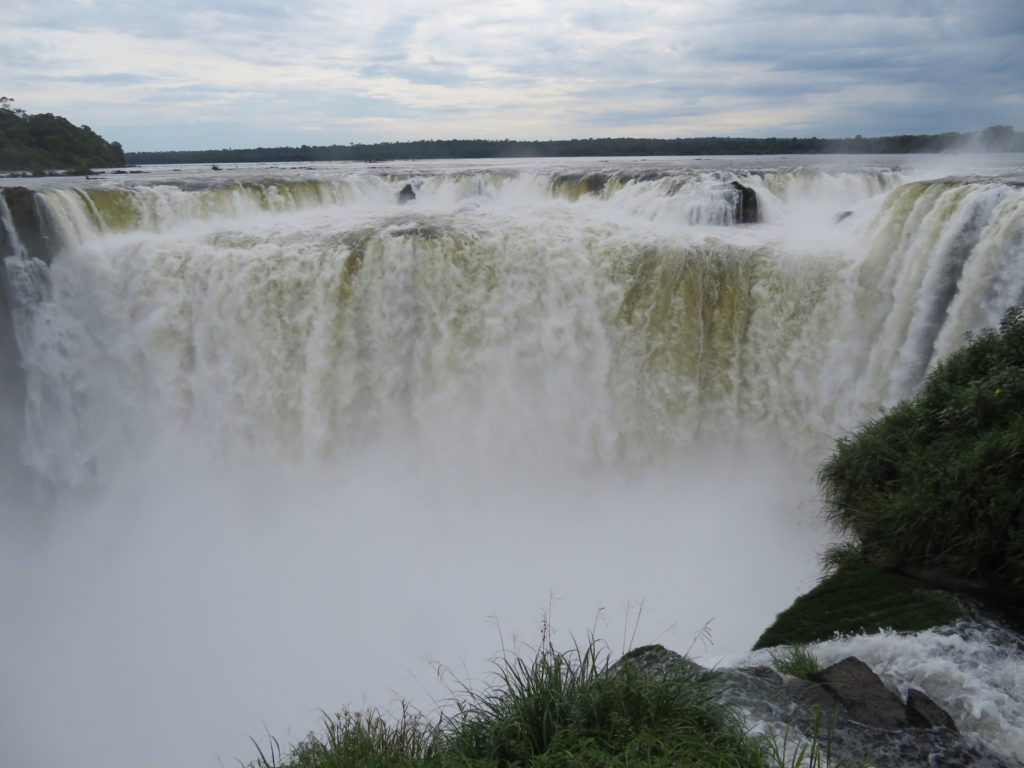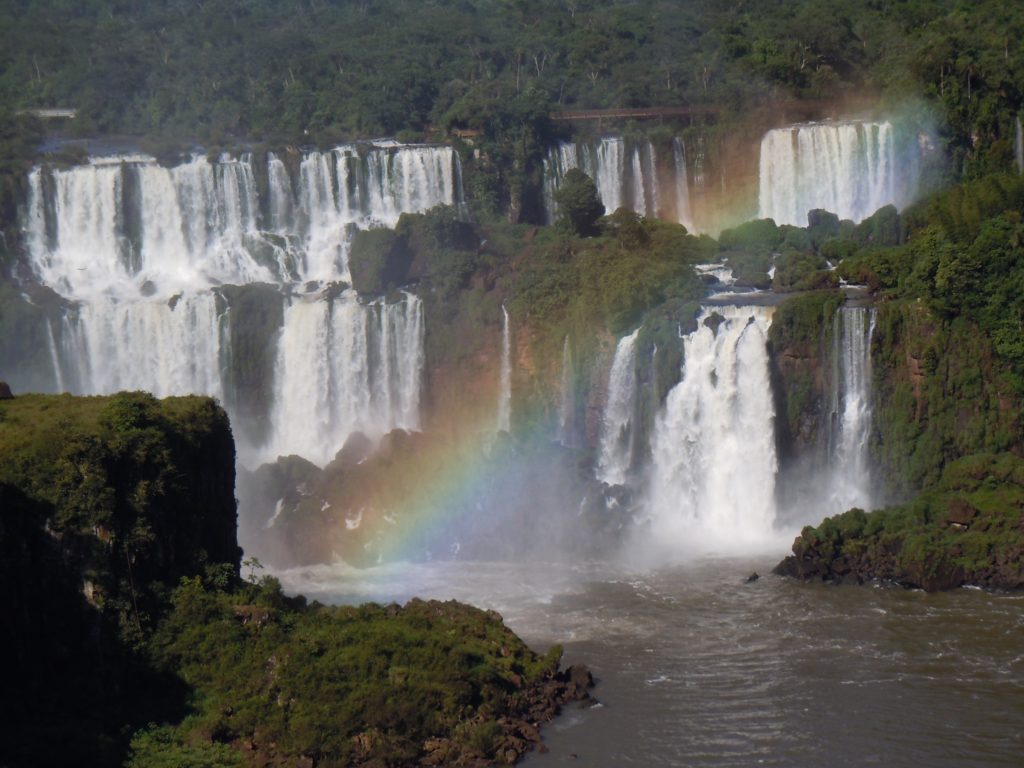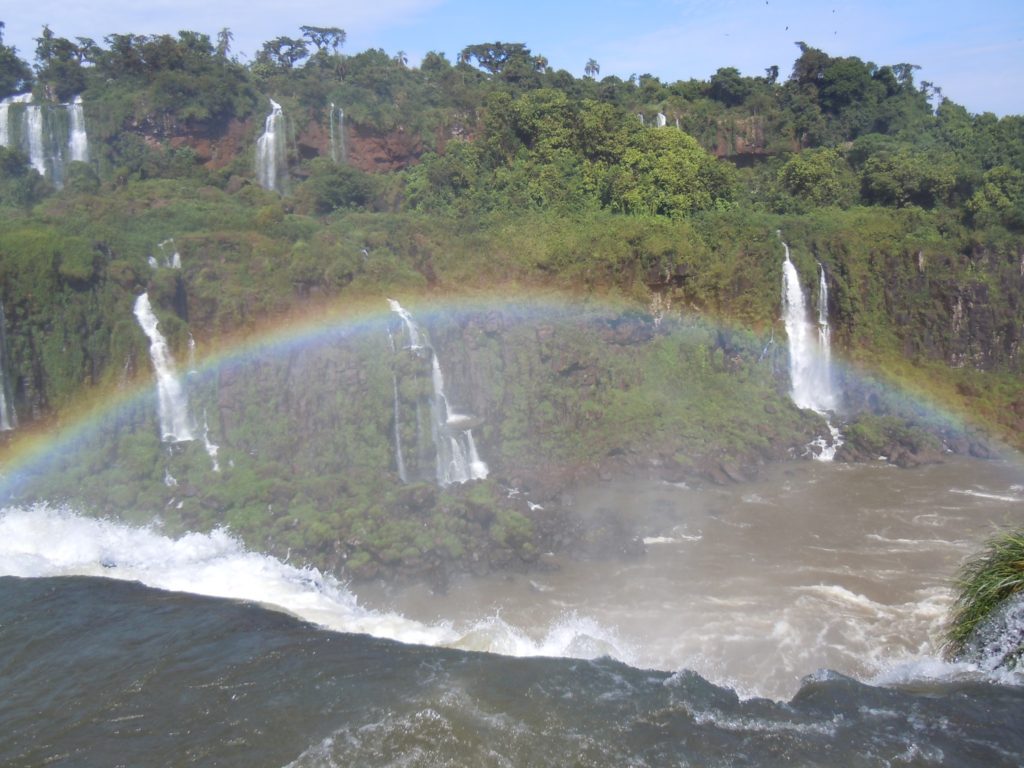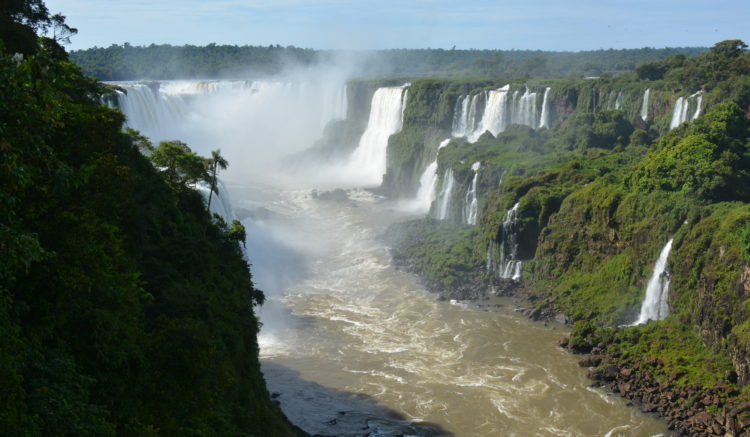The Iguaçu Falls (Cataratas do Iguaçu) are one of the most awe-inspiring natural wonders of the world, located at the tri-border region where Brazil, Argentina, and Paraguay converge. With an immense cascade of water set amidst lush subtropical rainforest, the falls captivate all who visit. The site, which straddles the Iguaçu River, is famed for its sheer power and stunning views, with around 80% of the falls on the Argentinian side but offering panoramic splendour from the Brazilian side.
The Falls’ Staggering Scale
The sheer magnitude of the Iguaçu Falls is breathtaking. The falls are made up of around 275 individual drops, stretching across an impressive width of 2.7 kilometres (1.7 miles). The average height of the falls ranges between 60 and 82 metres (197 to 269 feet), with the most dramatic plunge occurring at Garganta del Diablo (Devil’s Throat), a horseshoe-shaped chasm that towers 82 metres high and sends water crashing down with intense force. The sound alone is deafening, and the mist generated by the waterfall creates rainbows that arch over the river. Back in the summer of 2006, when we were last here, many of the secondary falls just had a trickle of water flowing.

The Legend of Iguaçu
The falls are steeped in ancient Guaraní legends. According to local mythology, the mighty river was once a calm and serene waterway until the serpent god M’Boi fell in love with a beautiful woman named Naipí. Naipí, however, was already in love with a warrior named Tarobá. In an act of vengeance, M’Boi split the river apart, creating the thunderous falls to trap the lovers forever. The legend says that Naipí was turned into the mist of the falls, eternally flowing over the rocks, while Tarobá became a palm tree at the top, watching over her. It adds a mythical dimension to the already otherworldly beauty of Iguaçu.
Crossing into Argentina – Garganta del Diablo
While the Brazilian side offers a sweeping panoramic view, the Argentinian side allows for a much closer experience of the falls, especially at Garganta del Diablo. A day trip across the border into Argentina is essential for those who want to feel the raw power of the falls up close. Wooden walkways lead you directly over the plunging waters of the Devil’s Throat, where you can feel the mist on your skin as you look down into the roaring abyss. It’s an exhilarating, almost spiritual experience that’s unlike any other.

The Tri-Border Region – Brazil, Argentina, and Paraguay
The area surrounding Iguaçu Falls is not just a natural wonder but also a unique cultural and political crossroads. The cities of Foz do Iguaçu (Brazil), Puerto Iguazú (Argentina), and Ciudad del Este (Paraguay) form a tri-border region where the boundaries between countries are somewhat fluid. While Brazil and Argentina have more regulated borders, the Paraguayan side is known for its more relaxed controls, allowing for duty-free shopping and casinos, which aren’t found on the Brazilian or Argentinian sides. This adds an intriguing dynamic to the region, with locals and visitors crossing into Paraguay for deals and entertainment.
Parque das Aves – A Haven for Birds
Right next to Iguaçu National Park lies Parque das Aves, a renowned bird sanctuary and one of the most important wildlife conservation sites in Brazil. Visiting the park was a highlight of our trip, providing a peaceful contrast to the powerful roar of the falls. Home to over 1,300 birds from 143 species, many of which are threatened or endangered, the park offers a rare chance to walk through lush aviaries where exotic birds, including brightly coloured toucans, parrots, and macaws, fly freely.

A key mission of the park is the protection and rehabilitation of native species from Brazil’s Atlantic Forest, one of the most endangered ecosystems in the world. Walking through the park’s large enclosures, it’s easy to see why Parque das Aves is so well-regarded by conservationists. It’s not just a tourist attraction, but a vital institution for preserving Brazil’s avian biodiversity.
Wildlife and Rainforest
Iguaçu National Park, a UNESCO World Heritage Site, is home to a rich array of wildlife. Walking the trails, we spotted groups of coatis foraging for food, while exotic birds like toucans flew above us, their brightly coloured beaks contrasting with the greenery. The park is a haven for biodiversity, with over 2,000 species of plants, countless bird species, and even elusive jaguars roaming its depths.
The Belmont Hotel and Iguaçu at Night
We had the rare privilege of staying at the Belmont Hotel das Cataratas, a luxury property located within Iguaçu National Park on the Brazilian side. This unique location allowed us to experience the falls in peace and quiet after the day-trippers had left. Walking the trails at night, under the moonlight, while listening to the distant roar of the water, offered a perspective that few get to enjoy. Without the crowds, the majesty of the falls felt even more profound, enhanced by the sight of mist rising in the moonlit air.

Final Thoughts
The Iguaçu Falls are a place where nature’s power is on full display, a meeting point of three countries and cultures, and a site steeped in legend. The overwhelming size of the falls, the beauty of the surrounding rainforest, and the region’s unique cultural mix create an unforgettable experience. Staying within the park allowed us to see the falls at their most tranquil, and crossing into Argentina offered the chance to experience the sheer intensity of the water up close. The region is not just a natural wonder, but also a fascinating place where borders blur, cultures mingle, and legends come alive.




Dates: 26/01/2018 to 30/01/2018
